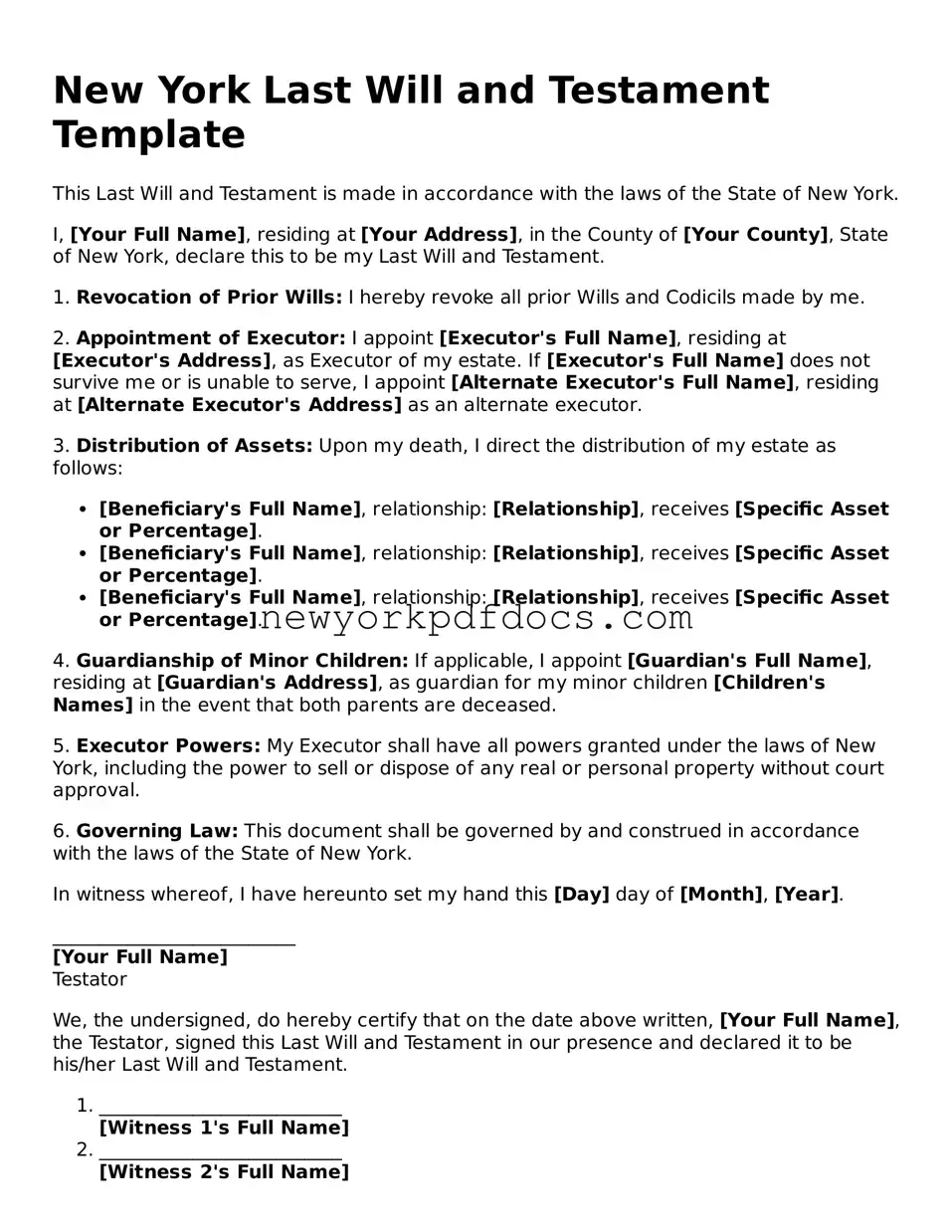New York Last Will and Testament Template
This Last Will and Testament is made in accordance with the laws of the State of New York.
I, [Your Full Name], residing at [Your Address], in the County of [Your County], State of New York, declare this to be my Last Will and Testament.
1. Revocation of Prior Wills: I hereby revoke all prior Wills and Codicils made by me.
2. Appointment of Executor: I appoint [Executor's Full Name], residing at [Executor's Address], as Executor of my estate. If [Executor's Full Name] does not survive me or is unable to serve, I appoint [Alternate Executor's Full Name], residing at [Alternate Executor's Address] as an alternate executor.
3. Distribution of Assets: Upon my death, I direct the distribution of my estate as follows:
- [Beneficiary's Full Name], relationship: [Relationship], receives [Specific Asset or Percentage].
- [Beneficiary's Full Name], relationship: [Relationship], receives [Specific Asset or Percentage].
- [Beneficiary's Full Name], relationship: [Relationship], receives [Specific Asset or Percentage].
4. Guardianship of Minor Children: If applicable, I appoint [Guardian's Full Name], residing at [Guardian's Address], as guardian for my minor children [Children's Names] in the event that both parents are deceased.
5. Executor Powers: My Executor shall have all powers granted under the laws of New York, including the power to sell or dispose of any real or personal property without court approval.
6. Governing Law: This document shall be governed by and construed in accordance with the laws of the State of New York.
In witness whereof, I have hereunto set my hand this [Day] day of [Month], [Year].
__________________________
[Your Full Name]
Testator
We, the undersigned, do hereby certify that on the date above written, [Your Full Name], the Testator, signed this Last Will and Testament in our presence and declared it to be his/her Last Will and Testament.
- __________________________
[Witness 1's Full Name]
- __________________________
[Witness 2's Full Name]
